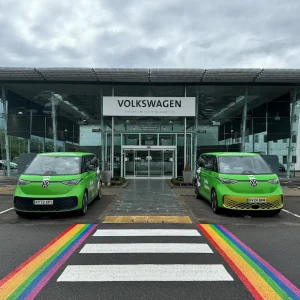Resurgent French brand Renault is looking to boost its share of the market to 5% in 2017, which compares with 2.0% at what UK boss Ken Ramirez describes as the “low point” at the end of 2012.
The 5% mark includes Renault’s budget sister brand Dacia, which is now approaching a 1% share of the UK, and between the two there has been a raft of new product to drive the growth. “Clio, Captur, Zoe, Twingo, Kadjar and Trafic are all new, plus Dacia’s four models, so that’s nine new vehicles in 20 months,” Ramirez told BusinessCar.
“And at the same time there has been a very conscious approach to business and residual value going forward – it had been an issue and particularly in business, where you look at RV as vital.”
Ramirez said RVs in the 40% area are ideal, and claimed the firm has now achieved that with its crossover Captur and Kadjar models. “We’re in the right place now, and able to play in all channels,” he continued. “Retail is the highest, but we’re in all channels that are profitable for us and the dealers, including fleet, where we’re able to play very competitively because the RV allows us to compete in the channels we were not able to compete in before.”
The RV turnaround has been driven by the new products coming through. “Every model adds the next step. The evolution for the brand is significant because the brand average was 27% in 2012, and it will be 35% by the end of 2015,” Ramirez claimed. “New products are delivered and invariably they are making contributions.”
The volume increase will take Renault back into the top 10 carmakers in the UK. “We’re knocking on the door and will be back there, but the important part is it will be there sustainably with the right RVs,” he said. “With the model line-up and approach to maintaining RVs going forward, the decay in residuals shouldn’t happen again.”
That RV focus has put Renault back on the fleet radar. “We’ve proven RVs are sustainable and we’ve played successfully in fleet. We’re nearly 50% up in fleet, which is an important evolution,” said Ramirez. “Fleet is very important, as long as we do so with maintained RVs – we can’t damage that. 50% of the market in the UK is fleet so we need [to maintain RVs], and 60% of retail uses lease so 80% of the market is RV sensitive. It’s crystal clear we have to take care of RVs.”
The 5% market share goal is only the first target though: “Where we should be is where we can sustain RVs and profitability for us and the dealer network. It could be higher than that, but this is the balance we need to maintain. We can grow further, the five-year plan was the first step. I don’t think our share has a limit.”





